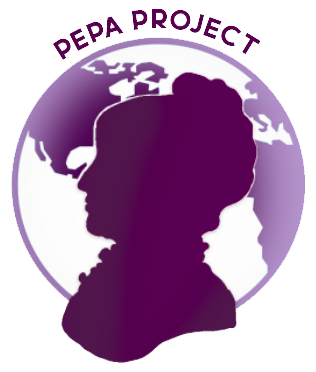Module 5
BECOMING INDEPENDENT
How to become independent in the host country
Introduction
This module deals with educating women migrants in being independent in their host country, as well as settles some simple ways to address cultural and language barriers in the host country. In Appendix 1 of the module are described the requirements for applying for citizenship.
Objectives
- Ways of addressing cultural and language barriers,
- How to apply for citizenship.
Duration & Requirements
Time for reading the course – 2 hours.
There aren`t any specific requirements.
The learners don’t need to have any particular knowledges or skills.
Internet connection, a notebook and a pen/pencil.
It is advisable that the learners consults the reference material and thus deepen the information provided.
Content
Why would a person want to leave their country of origin? Some reasons immigrants choose to leave their home countries include economic issues, political issues, family reunification, or natural disasters. Economic reasons include seeking higher wages, better employment opportunities, a higher standard of living, and educational opportunities. Women migrate for diverse reasons: from leaving behind poverty, conflict and climate-related disasters to escaping deeply entrenched gender inequalities, including sexual and gender-based violence and lack of access to livelihoods and resources.
Why economic inclusion is the key?
Including women refugees in the economies of their host countries is widely recognised as an effective way of increasing their independence, boosting the economic health of local communities, and restoring dignity to forcibly displaced people who have lost most (and perhaps all) of their possessions and livelihoods.
- Rebuilding lives: Through safe work, people forced to flee can meet their families’ basic needs, maintain their dignity, improve their self-reliance and resilience, and contribute to society.
- Safety: Safe employment also gives refugees the means to meet their own needs without resorting to negative coping mechanisms.
- Economic growth: Many studies show that refugees can boost the economy of the countries that host them, even in low to middle-income countries.
Migrant women display considerable agency. They contribute to the economic development of their countries of destination through their competencies and skills, and to that of their countries of origin through their remittances and their increased experience when they return to those countries. Often, migrant women help other family members to migrate by paying for the costs of the move. As migrants, women are sources of remittances that may be used to improve the wellbeing of other family members and foster economic growth. In countries of destination, migrant women work to improve their own and their family’s standards of living, and they often press for changed gender relations within their families. In many countries, they also form and participate in non-governmental organizations that lobby for gender equality. Upon return to the countries of origin, migrant women may disseminate the importance of rights and opportunities for women.
Experienced migrant women already well established in a community can play a role, for example as mentors, facilitators, or role models.
The main characteristics are:
- increased capacity to interact and feel at ease in their social environment and to participate to social and political life at local level;
- improved preparation for entering labour market and active social participation;
- improved independence and self-esteem;
- better level of knowledge of women rights, increasing migrant women self-confidence, opening of horizons of participating women on how they see their role in society;
- better understanding by professionals and public official working with migrant women of their specific needs and gender issues.
International instruments which protect women migrants are:
- The Universal Declaration of Human Rights;
- The UN’s International Conventions on:
- Protection of the Rights of All Migrant Workers and Members of Their Families;
- Elimination of All Forms of Discrimination Against Women (CEDAW);
- Elimination of All Forms of Racial Discrimination (CERD);
- The Rights of the Child (CRC);
- Covenants on Economic, Social and Cultural Rights (ESCR) and Civil and Political Rights (CPR);
- Protocol to Prevent, Suppress and Punish Trafficking in Persons, Especially Women and Children (2000).
- ILO Conventions no. 97 and no. 143 on Migrant Workers; its Declaration on Fundamental Principles and Rights at Work and its follow-up; and its Multilateral Framework on Labour Migration (2006).
How to overcome language and cultural barriers?
Cultural and language barriers are challenges to cross-cultural communication within an organization. When people from different cultures who might speak different languages, have different cultural beliefs or use different gestures and symbols to communicate, their cultural differences might become barriers to workplace success. This happens because of a lack of cultural awareness, knowledge, and communication.
How to overcome language barriers:
- Use plain language.
- Find a reliable translation service.
- Enlist interpreters.
- Provide language classes.
- Use visual methods of communication.
- Use repetition.
- Be respectful.
How to overcome cultural barriers and embrace cultural difference:
- Ensure clear and polite communication.
This can include:
- using simple words;
- using visual methods to communicate results;
- avoiding slang words and phrases
- Learn about different cultures.
- Work towards accommodating cultural difference.
- Share knowledge.
- Employ diversity training.
Diversity training can potentially foster inclusive work culture, encourage teamwork and leadership, create new opportunities, and thereby create a positive work culture. This training will help employees understand and embrace the cultural differences of their co-workers, and co-workers to embrace each other.
Summary
In this chapter, we present significant information of the importance of economical inclusion of migrant women in the labour market as well as international instruments for helping women migrants. We also point out the main ways of overcoming cultural and language barriers.
Learning Outcomes
- How to overcome language and cultural barriers;
- Requirements for migrants to apply for nationality.
Self-assessment
Suggested resources
References
- https://www.ilo.org/wcmsp5/groups/public/@dgreports/@gender/documents/publication/wcms_101118.pdf
- https://www.linkedin.com/pulse/20140603143206-20499125-how-to-overcome-language-and-cultural-barriers-in-the-workplace
- Ministry of Justice, Exh. N94-00-159 from 18 December 2020.
- https://www.immigrationdirect.co.uk/how-to-apply-british-citizen.html
- https://balcellsgroup.com/how-to-get-the-spanish-citizenship/
- https://www.gov.pl/web/mswia-en/apply-to-be-recognised-as-a-polish-citizen
- https://en.wikipedia.org/wiki/Romanian_nationality_law
